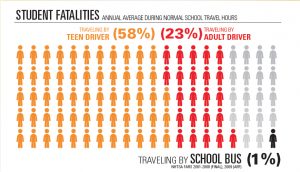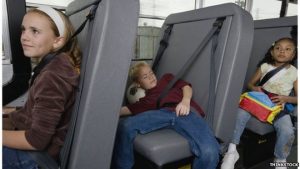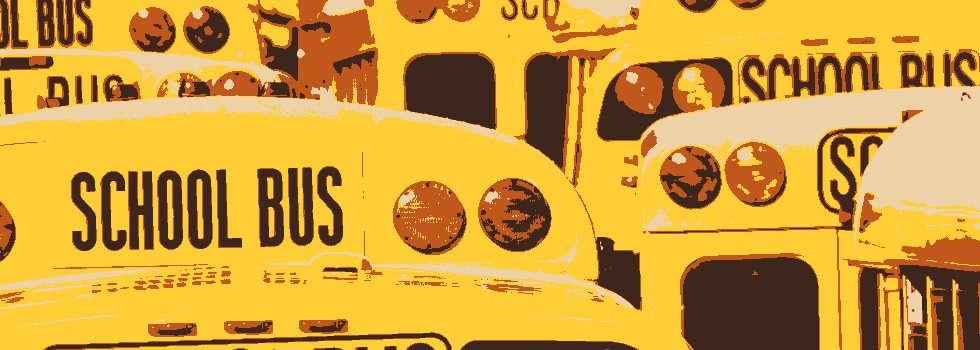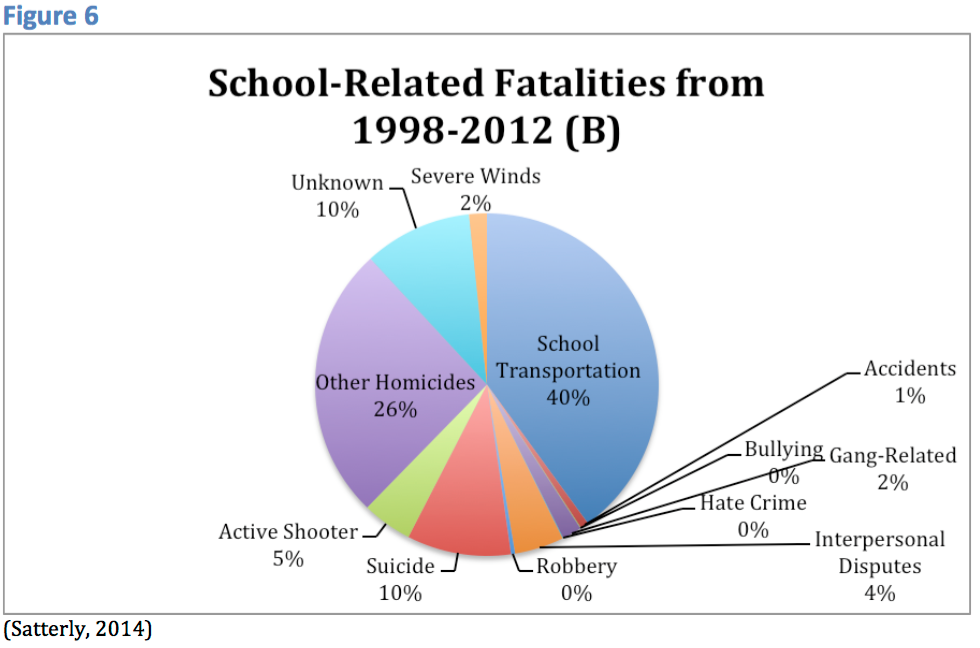Seat Belts on School Buses?
A fatal bus crash in Chatanooga that killed six children has intensified the demand for seat belts on school buses. This dialogue is similar to the use of various Active Shooter programs after Sandy Hook. The dialogue is important, but decisions should be made rationally, not in response to the emotions of the tragedy.
So what are the facts about school buses and fatal crashes?
School Bus Safety Facts
According to the National Highway and Transportation Safety Administration (NHTSA), since 1988 there have been over 416,000 fatal crashes in the United States. 1,265 of these involved school buses, or 0.03%. 1,409 people have died in accidents involving school buses, of which 113 were students (8%). As is seen in the graphic below, 1% of students killed during normal school travel hours were on a school bus, making school buses the safest way to get to school (NHTSA, 2009).
School Bus Seat Belts: Pros & Cons
In any rational dialogue on a topic, it is good to consider the pros and cons.
Some good things about seat belts on school buses:
- Prevents children from being thrown from their seats
- Teaches children to use seat belts
- Their use may protect against litigation
- Can improve student behavior
Some areas of concern:
- It can cost up to $15,000 to retrofit a school bus with seat belts, including the hardening of seat frames to be able to properly install lap & shoulder belts.
- Students can, and have, use the belt buckles as weapons.
- It would be next to impossible to ensure that all students remain properly buckled.
- After an accident, disoriented and panicked students may find it difficult to get out of their seat belts.
- The proper use of seat belts requires they be adjusted each time they are used. This will take additional time.
- The installation of seat belts will reduce bus capacity, requiring more buses be used to deliver the same number of students.
- Students who fail to use seat belts properly may be thrown into belted students, creating a double impact.
- As of yet, there are no federal standards to outline proper installation of seat belts in school buses.
Start the Dialogue
The safety of all children should be the goal of everyone who cares for them, so the ultimate goal is to have zero children killed while in our care. Therefore, fair consideration should be given to any idea that can improve child safety, including the use of seat belts on school buses. However, that means considering all the pros and cons. The ones above are just a start.
Having passion for the care of children is a wonderful thing, but we need to take care to not let that passion cloud our decision-making. The stakes are too high.



